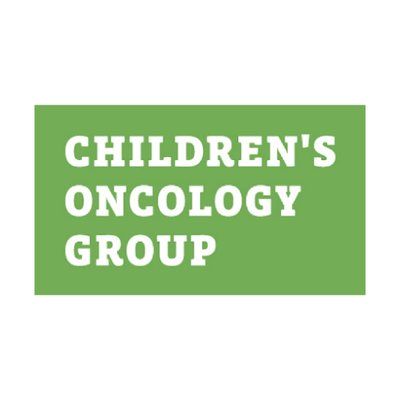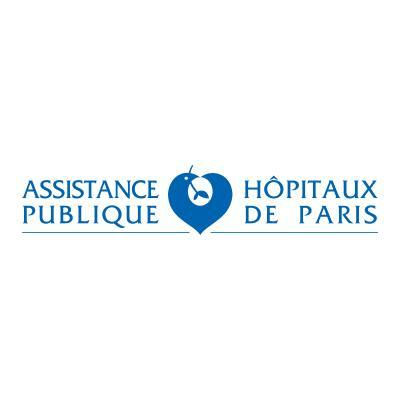预约演示
更新于:2025-05-07
Ganglioneuroblastoma
神经节成神经细胞瘤
更新于:2025-05-07
基本信息
别名 Ganglioneuroblastoma、Ganglioneuroblastoma (disorder)、Ganglioneuroblastoma (morphologic abnormality) + [13] |
简介 A moderately malignant neoplasm composed of primitive neuroectodermal cells dispersed in myxomatous or fibrous stroma intermixed with mature ganglion cells. It may undergo transformation into a neuroblastoma. It arises from the sympathetic trunk or less frequently from the adrenal medulla, cerebral cortex, and other locations. Cervical ganglioneuroblastomas may be associated with HORNER SYNDROME and the tumor may occasionally secrete vasoactive intestinal peptide, resulting in chronic diarrhea. |
关联
7
项与 神经节成神经细胞瘤 相关的药物靶点 |
作用机制 GD2抑制剂 [+2] |
非在研适应症 |
最高研发阶段批准上市 |
首次获批国家/地区 美国 |
首次获批日期2015-03-10 |
靶点 |
作用机制 DNA抑制剂 |
最高研发阶段批准上市 |
首次获批国家/地区 美国 |
首次获批日期1959-11-16 |
18
项与 神经节成神经细胞瘤 相关的临床试验NCT06858501
Concordance in Response Assessment Incorporating Meta-Iodobenzylguanidine (123I-MIBG) and Meta-[18F]Fluorobenzylguanidine (18F-MFBG, IND#146379, NSC#853868) Imaging in Neuroblastoma
This phase II trial evaluates whether an investigational scan (18F-MFBG positron emission tomography [PET]/computed tomography [CT] or PET/magnetic resonance imaging [MRI]) can accurately detect tumors in patients with newly diagnosed, high-risk neuroblastoma as well as standard of care imaging with 123 I-MIBG. 18F-MFBG is a radioactive diagnostic agent that is injected into a vein and taken up by tumor cells. The cells can then be visualized using PET/CT or PET/MRI scans. A PET scan uses radioactive material injected into the blood to show the internal workings of the body. A CT scan uses x-rays and a computer to produce a 3-dimensional image of the body. MRI uses radiofrequency waves and a strong magnetic field rather than x-rays to provide clear and detailed pictures of internal organs and tissues. Combining PET with CT or MRI may help doctors better understand the extent and the exact location of disease. Diagnostic procedures, such as 18F-MFBG PET/CT or PET/MRI, may detect tumors as well as or better than the current standard imaging with 123 I-MIBG in patients with newly diagnosed, high-risk neuroblastoma.
开始日期2025-06-20 |
NCT06798532
Interest of Preoperative Arteriography to Identify the Adamkiewicz Artery Before Surgery for Basi-thoracic Neuroblastic Tumors
Neuroblastic tumors (NBTs) develop from neural crest cells that give rise to the sympathetic nervous system. They include neuroblastomas, ganglioneuroblastomas, and ganglioneuromas. They represent approximately 10% of solid tumors in children under 15 years of age. In 15 to 20% of cases, NBTs are located in the thoracic region. These paravertebral tumors have an extracanal component and some also have an intraspinal component (dumbbell tumors) that can cause spinal cord compression. Surgery for these tumors also exposes the patient to neurological complications. In the thorax, the basi-thoracic location (T9-T12) may be particularly at risk due to the presence of the artery of Adamkiewicz (AKA), which supplies blood to the spinal cord; damage to this artery can result in spinal cord ischemia. To avoid this scenario, some teams recommend performing spinal cord arteriography to identify AKA. However, many centers do not perform arteriography and do not report more postoperative complications.
Currently, there is no consensus on the indications for performing preoperative spinal arteriography in patients undergoing surgery for basi-thoracic NBT.
This study evaluates the practice in France of preoperative arteriography to identify the AKA among patients undergoing surgery for basi-thoracic neuroblastic tumors and analyzes the incidence of postoperative neurological complications in these patients.
Currently, there is no consensus on the indications for performing preoperative spinal arteriography in patients undergoing surgery for basi-thoracic NBT.
This study evaluates the practice in France of preoperative arteriography to identify the AKA among patients undergoing surgery for basi-thoracic neuroblastic tumors and analyzes the incidence of postoperative neurological complications in these patients.
开始日期2025-03-01 |
NCT06450041
Phase II Study of Ex-Vivo Expanded Allogeneic Universal Donor TGFβi NK Cell Infusions in Combination With Temozolomide, Irinotecan, Dinutuximab, and Sargramostim in Patients With Relapsed or Refractory Neuroblastoma The STING (Sequential Temozolomide, Irinotecan, NK Cells and GD2 mAb) Trial
This is a phase II study looking at patient response to treatment with the combination dinutuximab, temozolomide, irinotecan, and GM-CSF.
开始日期2024-12-16 |
申办/合作机构 |
100 项与 神经节成神经细胞瘤 相关的临床结果
登录后查看更多信息
100 项与 神经节成神经细胞瘤 相关的转化医学
登录后查看更多信息
0 项与 神经节成神经细胞瘤 相关的专利(医药)
登录后查看更多信息
1,010
项与 神经节成神经细胞瘤 相关的文献(医药)2025-05-01·Clinical Radiology
Radiomics analysis based on 18F-fluorodeoxyglucose positron emission tomography/computed tomography for differentiating the histological classification of peripheral neuroblastic tumours
Article
作者: Yang, J ; Feng, L ; Zhang, H ; Yao, X ; Wang, W ; Wang, C
2025-03-24·Journal of Neurosurgery: Case Lessons
Stereotactic radiosurgery for brain metastases secondary to adrenal ganglioneuroblastoma: illustrative case
Article
作者: Harary, Paul M. ; Cardona, Juan J. ; Tayag, Armine ; Chang, Steven D. ; Park, David J. ; Hori, Yusuke S. ; Ustrzynski, Louisa ; Persad, Amit R. L. ; Emrich, Sara C.
2025-02-01·Journal of Surgical Research
A Single-Institution Analysis of Surveillance Practice for Low-Risk Neuroblastic Tumors
Article
作者: Shah, Nilay ; Schwartz, Dana ; Mallampalli, Grace ; Bricker, Josh ; Mansfield, Sara A ; Streby, Keri ; Srivatsa, Shachi ; English, Jennifer ; Cole, Lindsay ; Aldrink, Jennifer H ; Nicol, Kathleen ; Ranalli, Mark
分析
对领域进行一次全面的分析。
登录
或

生物医药百科问答
全新生物医药AI Agent 覆盖科研全链路,让突破性发现快人一步
立即开始免费试用!
智慧芽新药情报库是智慧芽专为生命科学人士构建的基于AI的创新药情报平台,助您全方位提升您的研发与决策效率。
立即开始数据试用!
智慧芽新药库数据也通过智慧芽数据服务平台,以API或者数据包形式对外开放,助您更加充分利用智慧芽新药情报信息。
生物序列数据库
生物药研发创新
免费使用
化学结构数据库
小分子化药研发创新
免费使用






